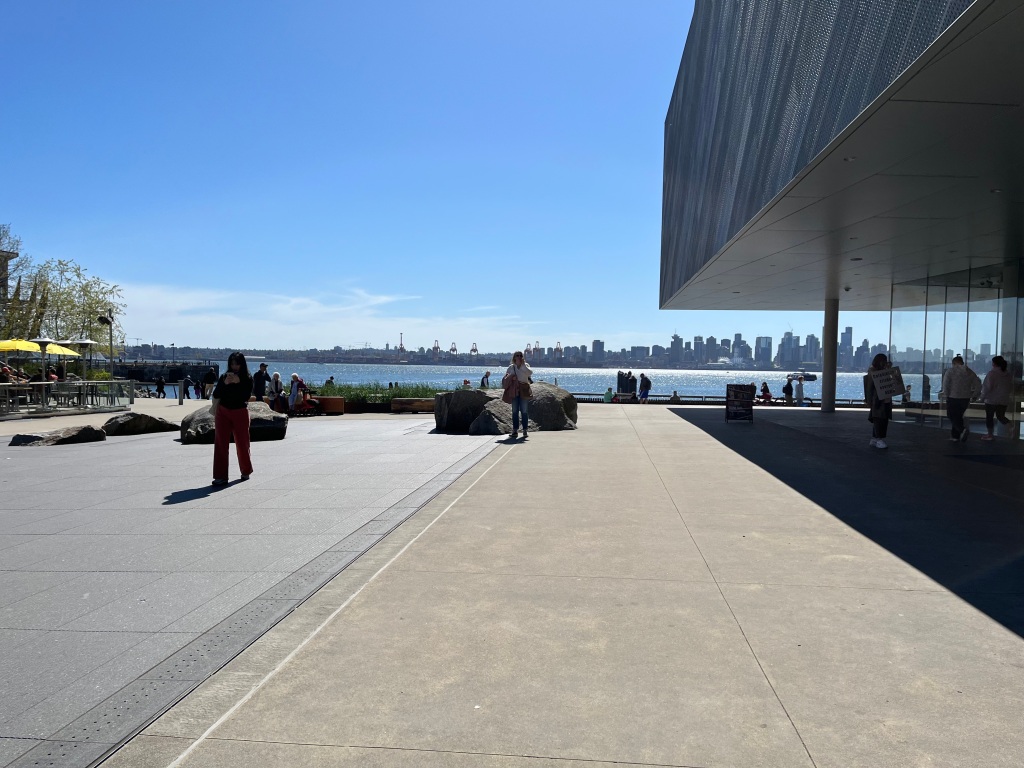
“Polygon Gallery, North Vancouver” Phone Photo, DS
Fujimura, Makoto. Art + Faith: A Theology of Making. Yale University Press:
https://www.yale.edu, 2020.
503 Words
It has been fashionable among the Western art community to ignore or scorn faith of any sort, particularly faith in Jesus as Lord . . . his faith commitment has been crafted and forged through good times and bad, emerging with a glow a multilayered texture . . . (N. T. Wright in Fujimura, vii)
The way forward . . . is not primarily intellectual, though it’s clear on every page . . . that this particular artist can match the philosophers and theologians . . . (N. T. Wright in Fujimura, ix)
Many years later, after I had established myself as an artist, I was astonished to see that it has exactly the same colors and movement that I am known for now. The journey of an artist begins at conception, and perhaps even way before. (Fujimura, 1)
I now consider what I do in the studio to be theological work as much as aesthetic work. I experience God, my Maker, in the studio . . . I rest in my quiet space, waiting for the paper surface to dry. As I wait, I write. (3)
To be human, is to be creative: “The characteristic common to God and man is apparently . . . the desire and ability to make things,” observed the writer Dorothy Sayers. (6)
God the Artist communicates with us first before God the lecturer. (7)
In the paintings for the Dillon Gallery show I wanted to honor Rouault by using a dark canvas as he had done, painting in the bleakness of Postwar Paris. Rouault depicted darkness head-on and yet brought in the aesthetics of his earlier apprenticeship in a stained glass studio. He literally placed colors as light emanating out of darkness. (10)
Consider a journey toward “making as knowing.” (12)
The first wall of resistance that the creative process runs up against is our contemporary Western cultural concept of “usefulness” –– what the French philosopher Jacques Ellul warned against in the mid-twentieth century as the dominance of “technique.” (15)
Artists are notorious for doing work that the world initially rejects but that later –– sometimes centuries later –– the world embraces as hidden treasure . . . poems of Emily Dickenson, the paintings of Vincent van Gogh . . . “discovered” later and now are essential to our culture . . . God creates out of love not necessity. (17)
The Theology of Making assumes that God created out of abundance and exuberance, and the universe (and we) exist because God loves to create. (18)
Making is the deepest integrated realm of knowing. (19)
We tend to depict the gospel as a message “God fixes things” . . . what I mean by plumbing theology . . . the consummation of God’s plan as it unfolds . . . is not a utilitarian restoration by an imaginative New Creation. (29)
Artists already live in the abundance of God. They see beyond the pipes. They hear the “music of the spheres” and desire to respond . . . (31)
